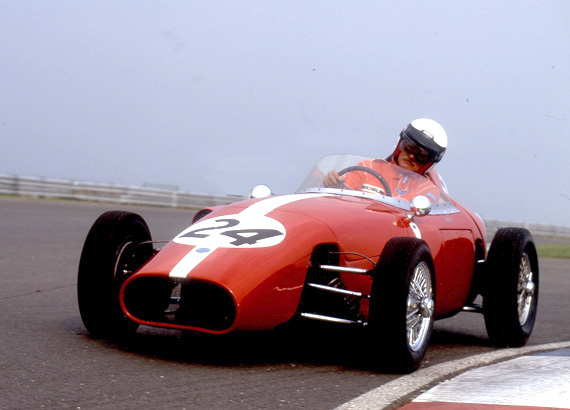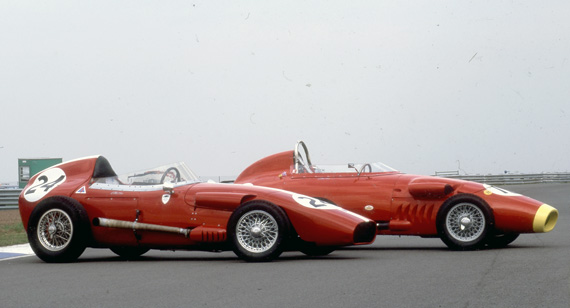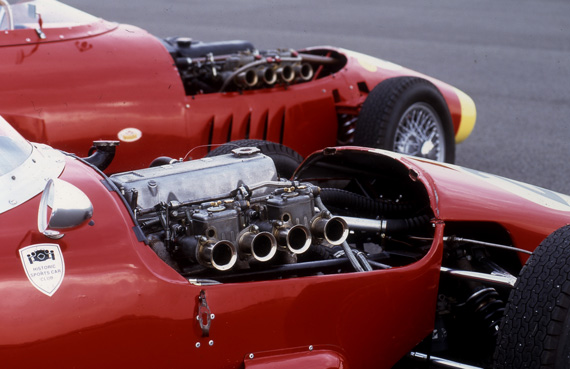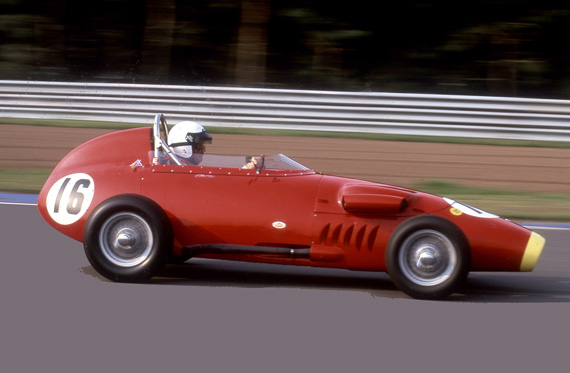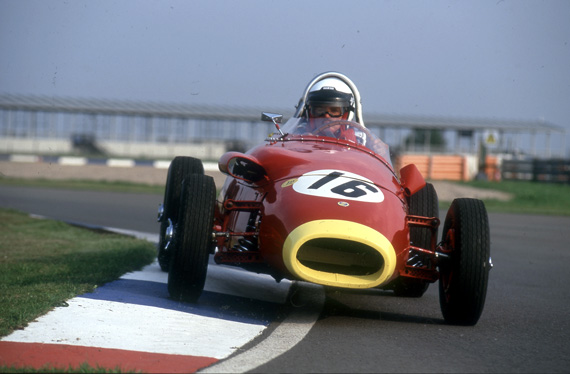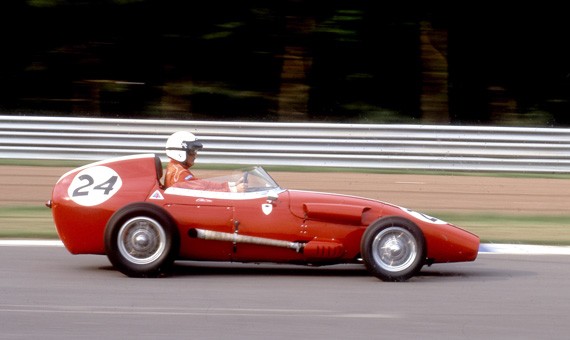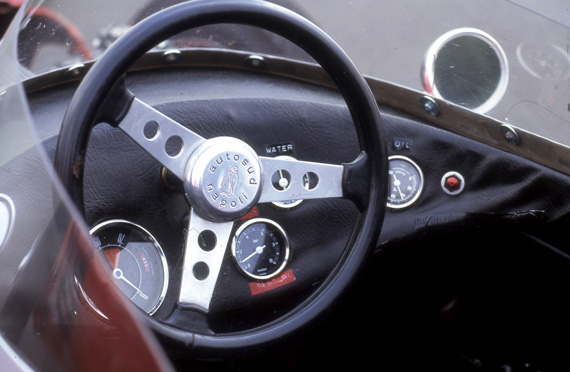by Ed McDonough
Photos by Peter Collins
This article, first published in 2003, was noticed by the Italian creator of the Autosud Napoli, and eventually resulted in the fascinating story related by Mr. Rosa Rosa about how he constructed, lost and found again the three Autosud Formula Juniors in 2007. Below, Ed McDonough drives one of the Rosa Rosa Autosuds and compares it to the finest front-engined Junior of the era, the Stanguellini.
The Stanguellini
Vittorio Stanguellini built the most successful Italian Formula Junior cars, and he worked more from a sense of passion for racing than virtually any other manufacturer. If you talk to his son Francesco today, the same passion is there, and Francesco clearly enjoys the regeneration of interest in the firm his family has been involved in since before the war. This car, chassis 139, was imported to the UK from the USA, by Brian Horwood and restored by him in the early 1980s and was raced for a few seasons. The owner, Martin Bunn, bought it in the mid-1980s and has campaigned it ever since. It had several years off before returning to a now active Formula Junior scene. The period history is largely unknown but it was sold to the USA as new.
The steering wheel and the driver’s seat are placed to the left of the cockpit. The gearshift and drive train are to the right of the driver’s leg, with a modern roll bar over the driver with a horizontal bar going down into the cockpit. The suspension is visible from the inside of the car except for the unique set of twin wires which locate the suspension laterally at the rear. Most Stanguellinis have been modified with this original feature removed. The driver is lower in this car, or at least feels so and it is brimming with period feel.
The engine with its twin Webers, 38 DCOEs, is canted to the right of the chassis, allowing room for the steering column to the left. The body is adorned with the beautiful shark-like gill openings delicately carved into the metal. The mirror is faired in for aerodynamic effect, in contrast to the old ‘Sebring’ type mirrors on the Autosud. But taking it out onto the Silverstone track revealed it to be much closer in behavioral characteristics to the OSCA we drove recently than the Autosud. The engine tuning is such that it needs a few revs, and it shares a trickier clutch, though it isn’t as stiff in the chassis department. You are very snug down in the cockpit and feel the car will protect you, and quite good brakes allows one to retain that feeling.
However, the suspension feels highly manageable, and after a suspension rebuild last year, the owner says he can now slide it in slower corners. I had to agree that the rear end could be hung out in a very controllable fashion while using the power of the engine. The cam timing is still not quite right so there was a periodic fluffiness but that didn’t detract seriously from the solid feel and stunning character of this great Italian.
The Autosud
Autosud of Naples constructed the first car in the class with independent rear suspension. This car, chassis # 012 is one of three cars built in 1959 and probably the only one still active. This car has been raced extensively and hill-climbed in Switzerland and Italy by Henry Chuat. It was acquired by the present owner, W. Ian Robinson, in January, 2000. The Autosud resumed its racing career again in 2001, although it is considered to be too heavy for its 80 bhp.
The Autosud is quite different in several ways from the Stanguellini. The seat is mounted above the drive train which means the pilot gets a loftier view of the things going on around him. Surprisingly, it didn’t seem to be problematic once a bit of acclimatization took place. The cockpit is very similar to the other three in most respects, except that are few places where you will ever see a genuine three spoke Autosud steering wheel! There are water and oil gauges as usual and a rev counter goes up to 7000 rpm.
The gear change has an interesting configuration, as the changer, bracketed to the chassis tube on the right hand side is held in place by a spring. This is a spacious car, but unlike the other cars it has some unique features, such as the Fiat 600 gearbox turned back to front which is what allows the use of the independent rear suspension. Very clever! The Fiat 1100 engine, labelled GGT for Garrio Telassi, who built the engine, and who still races himself. The Webers on this car are the 38DCOE variety. The car features a fairly simple and large space frame, which makes it easy to work on. The padding on the headrest opens to allow access to the small roll bar and breather pipes. The headrest is removable in this thoughtful design.
Driving brought some surprises. Chassis number 012 has sensitive steering and the handling is very precise, allowing it to be pushed quite hard through some tight corners on acceleration and over modern kerbing without feeling you didn’t know what was going to happen next. The bark of the exhaust, next to your right ear in front of the rear wheel tells you everything the engine is doing and how hard you are working. The gearing is a bit low so there is a premium on keeping the revs up in top gear. The rear suspension makes it very neutral in the handling department. The gearbox needed a bit of effort, but it was certain and predictable. The height at which you sit means it takes a while to go quickly and feel secure about it, but it certainly is a quick little car.
